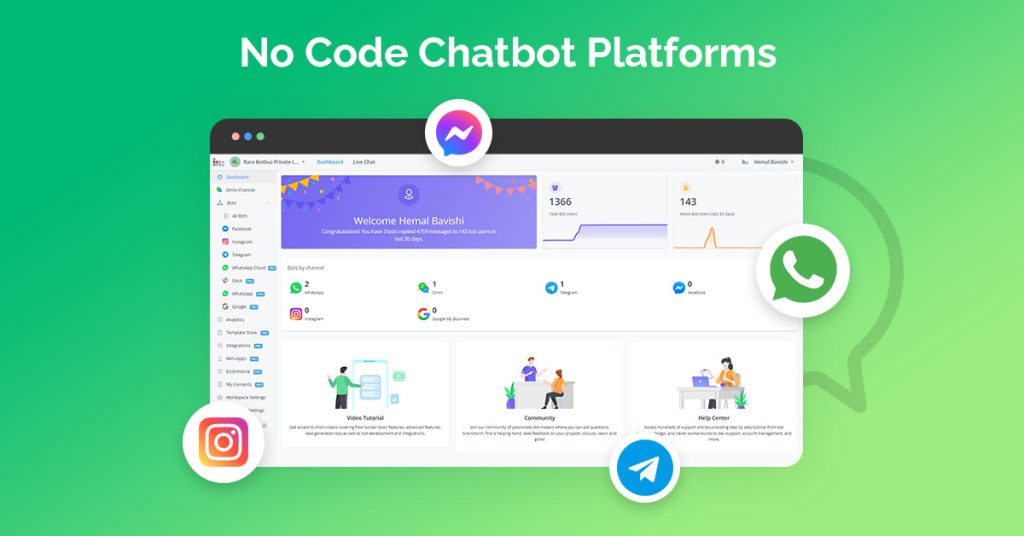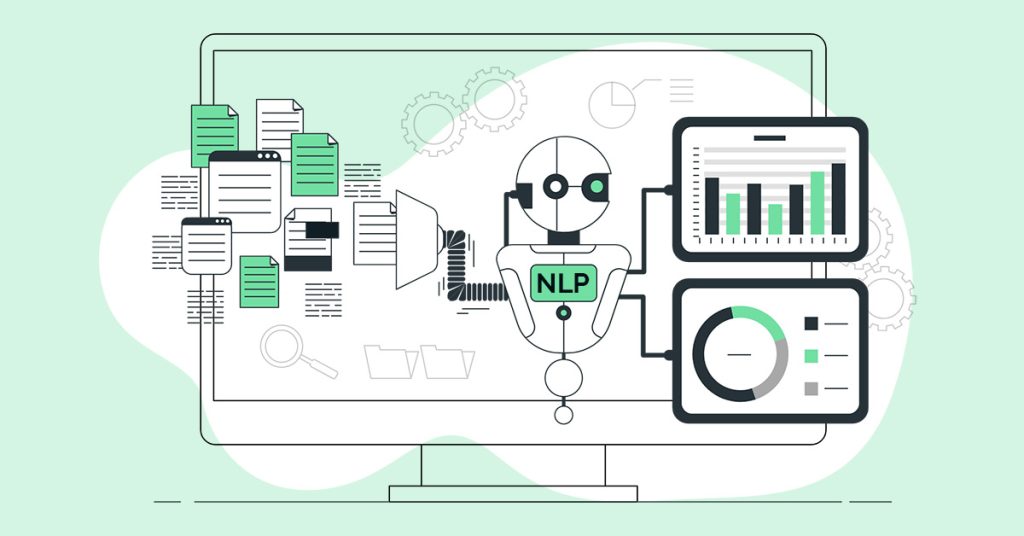Chatbots with a Human Touch : Making Interactions Feel Natural
Imagine interacting with a computer program that feels more like a helpful colleague or a friendly acquaintance. That’s the power of humanizing chatbots. These chatbots go beyond simply. It provides information by using language and behaviors that mimic real people. This can make interactions with chatbots more engaging, efficient, and even enjoyable.
Why is it important to create natural-sounding interactions? People are accustomed to natural conversation. When a chatbot speaks with a stiff, robotic tone, it can be off-putting & hinder the user experience. Humanizing chatbots helps bridge this gap. It fosters trust & makes users feel more comfortable interacting with the technology.
Why Do We Need Chatbots with a Human Touch ?
Chatbots have come a long way. They used to be limited to simple, scripted responses, offering a frustratingly robotic experience. Today, however, chatbots are evolving into conversational agents. They are capable of more natural and engaging interactions.
This shift towards human-like chatbots is driven by the power of natural language. People communicate best in natural language. They use informal speech, humor & even sarcasm at times. When a chatbot can understand and respond using this type of language, it creates a much more user-friendly experience.
Why Users Crave Conversation, Not Robots :
Have you ever gotten frustrated with a chatbot that just couldn’t seem to understand your question, no matter how you phrased it? That’s a common problem with traditional, robotic chatbots. These chatbots rely on pre-programmed responses. It struggles to adapt to the natural flow of conversation.
So why do users prefer conversational and human-like interactions? Here’s the thing: we’re wired for conversation. We naturally seek out interactions that feel engaging and empathetic. A chatbot that can understand natural language and respond in a way that feels human creates a more positive experience.
Traditional robotic chatbots often present several challenges :
- Limited Understanding : They struggle to grasp the nuances of human language. It leads to frustration and misunderstandings.
- Monotonous Interactions : Repetitive, scripted responses can make interactions feel dull and impersonal.
- Lack of Trust : When a chatbot can’t engage in a natural conversation, it’s hard for users to trust its capabilities.
Humanizing chatbots offers a solution to these problems. By incorporating natural language processing and a touch of personality, chatbots can:
- Boost User Engagement : Natural conversations are inherently more engaging. It keeps users interested and more likely to return.
- Increase User Satisfaction : Chatbot can effectively resolve issues. It provides helpful information, and users feel satisfied with the interaction.
- Build Trust and Credibility : A chatbot that can hold a natural conversation feels more reliable and trustworthy.
Ultimately, human-like chatbots are about creating a more positive and productive user experience. They bridge the gap between technology and human interaction. Thus, making it easier and more enjoyable for users to get what they need.
Top Tips to Create Chatbot with a Human Touch :
1) Speaking the User's Language :
The first step to humanizing chatbot is ensuring it speaks the same language as your users. This means ditching the robotic jargon and embracing familiar language and terminology.
Here’s how to make your chatbot a natural conversationalist :
Know Your Audience : Tailor your chatbot’s language to resonate with your target audience. A chatbot for teenagers might use slang or informal language. While a chatbot for a professional setting would use more formal speech.
Speak in Plain English : Avoid technical jargon and complex sentence structures. Focus on clear, concise communication that anyone can understand.
Embrace Everyday Language : Use contractions like “don’t” and “can’t,” and incorporate common phrases like “no problem” and “you’re welcome”. This creates a more natural flow of conversation.
2) Keeping the Conversation Flowing :
Some key strategies to maintain context and create natural-sounding conversations :
Don’t Lose the Thread : A core aspect of human conversation is remembering what’s been said before. Context awareness is crucial for chatbots. Utilize machine learning techniques that allow the chatbot to track the conversation history. This enables the chatbot to reference previous topics. It also helps to avoid making repetitive or irrelevant statements.
Understanding What’s Not Said : Just like in real conversations, people often imply things without explicitly stating them. Intent recognition helps bridge this gap. Train your chatbot to analyze user input beyond keywords. Also recognize the underlying intent behind a question or request. This allows for more natural and appropriate responses.
Respond Like You Mean It : Generic responses can break the flow of conversation. Craft context-aware responses that build upon what’s been discussed. For instance, if a user asks about a product feature you mentioned earlier, the chatbot can directly reference that feature and provide more details.
3) Let's Talk Like Friends !
The first step to humanizing your chatbot is all about the dialogue. We want to create a conversational tone that feels natural & friendly, just like you’re chatting with a colleague or acquaintance.
Here’s how to achieve that:
- Casual Language and Expressions: Ditch the robotic jargon! Use informal speech, contractions, and even some emojis (used sparingly) to mirror the way people talk in everyday conversation.
- Finding the Right Balance: While casualness is key, it’s important to strike a balance with professionalism. Depending on your brand or industry, you might want to avoid slang or overly informal terms. The goal is to be approachable, but also respectful.
Here are some examples:
- Instead of: “Greetings, how may I be of service today?” Try: “Hey there! What can I help you with?”
- Instead of: “You have successfully completed your transaction.” Try: “Awesome! All done. Did you have any other questions?”
By incorporating these tips, you can craft dialogue that feels natural and engaging, making your chatbot a more enjoyable experience for users.
4) Empathy Makes the Difference :
We’ve established that human-like chatbots are key to a positive user experience. But what does it truly mean to humanizing chatbot ? It goes beyond just mimicking informal language. A crucial element is empathy.
Empathy allows your chatbot to understand and respond to a user’s emotions. This can make a huge difference in how users perceive the interaction. Imagine a user who’s frustrated with a product. A robotic chatbot might simply offer scripted troubleshooting steps. An empathetic chatbot, however, could acknowledge the user’s frustration and offer support in a way that feels more human.
Here are some techniques for incorporating empathy into your chatbot :
Emotion Recognition : Train your chatbot to identify keywords and phrases. It should indicate emotions like frustration, sadness, or excitement.
Empathetic Responses : Craft responses that acknowledge the user’s emotions. For example, “I understand you’re feeling frustrated. Let’s see how I can help.”
Offer Reassurance : Use positive language and offer solutions to show the user you care about their experience.
By incorporating empathy, your chatbot can :
Build Trust and Rapport : Users appreciate being understood, which builds trust and encourages further interaction.
Increase User Satisfaction : Empathetic responses show the user you care about their experience, leading to higher satisfaction.
Create a More Natural Interaction : Acknowledging emotions makes the conversation feel more human and relatable.
5) The Magic of Varied Responses :
The first step to humanizing your chatbot is all about the responses. After all, this is how your chatbot will converse with users. Here are some key tips to keep your chatbot’s responses feeling natural and engaging :
- Ditch the Script, Embrace Variety : Move away from repetitive, pre-programmed responses. Instead, use a variety of sentence structures, synonyms, and even humor (where appropriate) to mimic natural conversation.
- The Power of Choice : Offer users a diverse range of response options to choose from. This gives the conversation a more natural flow and allows users to feel like they have some control over the interaction.
- Personalization is Key : Take user input and preferences into account when crafting responses. This can be anything from using the user’s name to tailoring the response based on their previous interactions with the chatbot.
6) Crafting a Chatbot Persona : The Heart of Humanization
The first step to humanizing your chatbot is creating a persona. This persona goes beyond just a name; it’s a comprehensive personality that defines how your chatbot interacts with users.
Here’s how to develop a unique & engaging chatbot persona :
- Unearth Your Chatbot’s Inner Character : Think about the kind of personality that would best suit your brand and target audience. Is your chatbot friendly & informative ? Witty and helpful ? Professional and courteous ?
- Define the Tone and Style : How will your chatbot speak? Will it use informal language and emojis, or a more formal tone ? Consider the overall brand voice and tailor the chatbot’s style to match.
- Align with Brand Identity : Your chatbot’s persona should be an extension of your brand. Make sure its personality traits and communication style reflect the values and image you want to project.
But how does a persona translate into user engagement ? Here are some ways :
- Storytelling : Infuse your chatbot’s responses with brief anecdotes or relatable stories that showcase its personality and connect with users on an emotional level.
- Consistency is Key : Ensure your chatbot’s personality shines through in every interaction. Consistent use of voice, tone, and signature traits builds trust and strengthens the user experience.
Integrating Botbuz for Creating Chatbots with a Human Touch :
Botbuz shines with its no-code approach. This means you can create your chatbot without needing programming expertise. But more importantly, Botbuz is designed with natural language processing in mind. This allows your chatbot to understand and respond to user queries in a way that feels natural and engaging.
Here’s how Botbuz can help you implement the humanization tips we discussed :
Crafting a Persona : Botbuz offers tools to define your chatbot’s voice and personality traits. It is through conversation flows and response options. You can choose from various response styles to match your desired tone & informality.
Natural Language Understanding : Botbuz leverages natural language processing to help your chatbot grasp the intent behind user queries. This allows for more flexible and human-like conversations.
Building User Engagement : Botbuz allows you to incorporate features like storytelling elements and multimedia content into your chatbot’s responses. This can keep users engaged and make interactions more interesting.
Conclusion :
In conclusion, the journey towards humanizing chatbots is about creating a more natural and engaging user experience. By developing a unique persona, leveraging the power of natural language processing, and crafting conversation flows that feel real, you can bridge the gap between technology and human interaction.
Platforms like Botbuz empower you to build chatbots that can understand and respond to natural language. It fosters a more conversational and engaging experience. Remember, humanizing a chatbot is an ongoing process. By constantly monitoring user interactions, refining responses, and personalizing the experience, you can create a chatbot that feels less like a machine & more like a helpful, relatable companion.
As chatbot technology continues to evolve, the potential for natural and engaging interactions will only grow. It makes human-like chatbots an essential tool for businesses seeking to connect with their audience on a deeper level.




